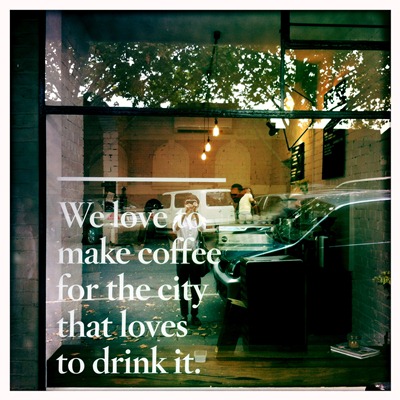
Melbourne’s coffee heritage is directly tied to its migrant population. In the ‘50s, a wave of Italians arrived in Australia and brought with them the espresso-drinking tradition. The first wave of coffee had arrived. With it came a slew of local roasters such as Vittoria and Genovese, today the largest of the mass-market coffee roasters. Espressos were served thick, black and strong as hell. Cappuccinos were topped with a frothy cap of poorly steamed milk.
The next wave—in the late 20th century—was a refining of the espresso-brewing techniques. Gone was the badly frothed, burnt milk, and in its place came silky smooth, velvety foam, poured with latte-art flourish. Baristas started being precise with the grinding and tamping of beans and the temperature stability of espresso machines. The Australian Barista Championships continues to be an annual showcase for this fastidiousness.
Fast forward to 2009 or so. The third wave was born when baristas and roasters started looking beyond regular espresso. Roasters started placing emphasis on the point of origin of coffee beans and in blending based on seasonal availability. Baristas started experimenting with alternative brewing methods to bring out the various flavor profiles of coffee. Siphon, Clover, pour over, French press, Aeropress—these are some of the more esoteric devices now being used to serve coffee. Even milk wasn’t overlooked—some cafes now source milk from small, single-herd farms.
The Melbourne coffee scene seems to be leading Australia's charge in the third wave quest for caffeine perfection. The big question: Is the current coffee wave just a trend or here to stay?
Excerpt from the August issue of epicure.
